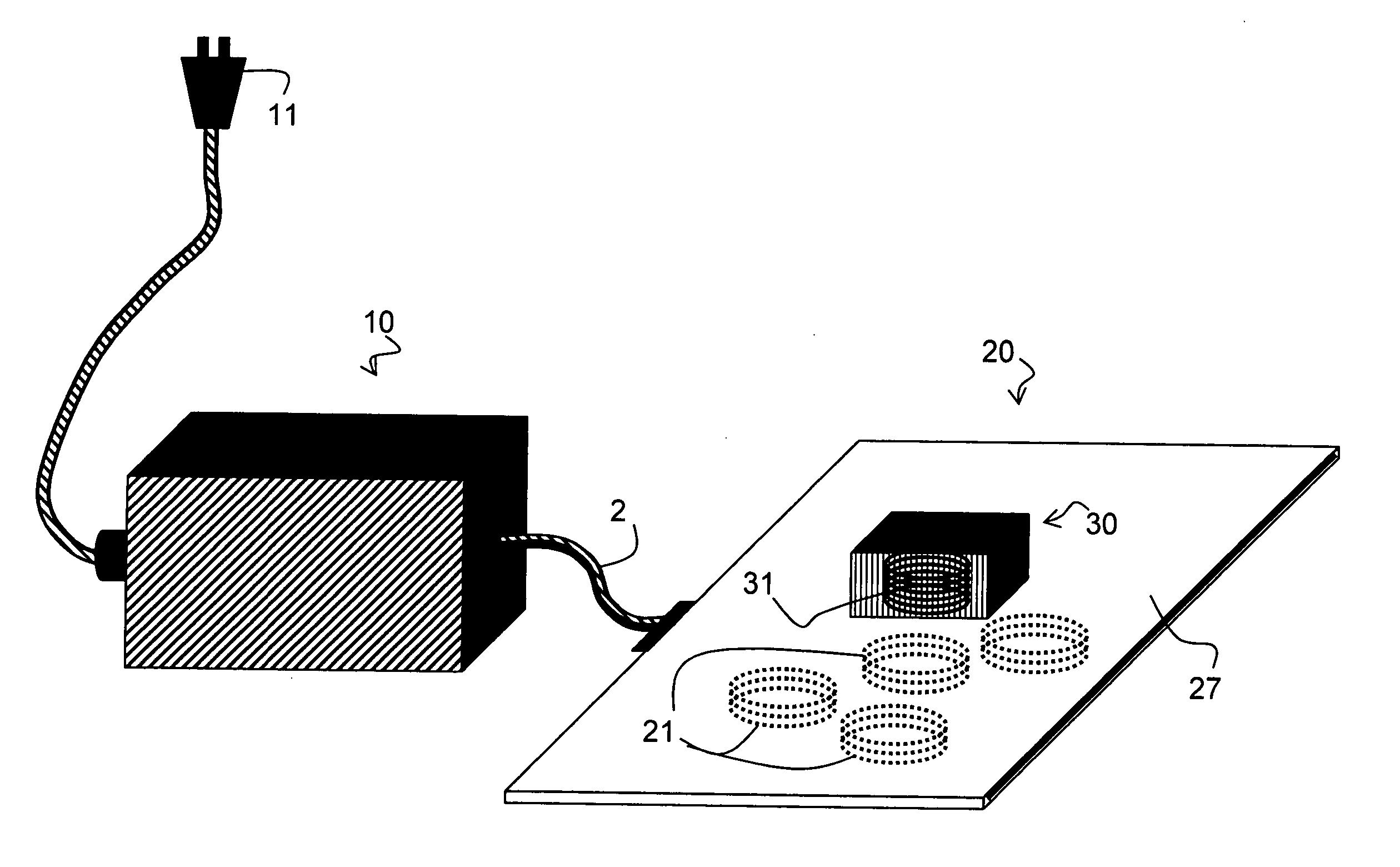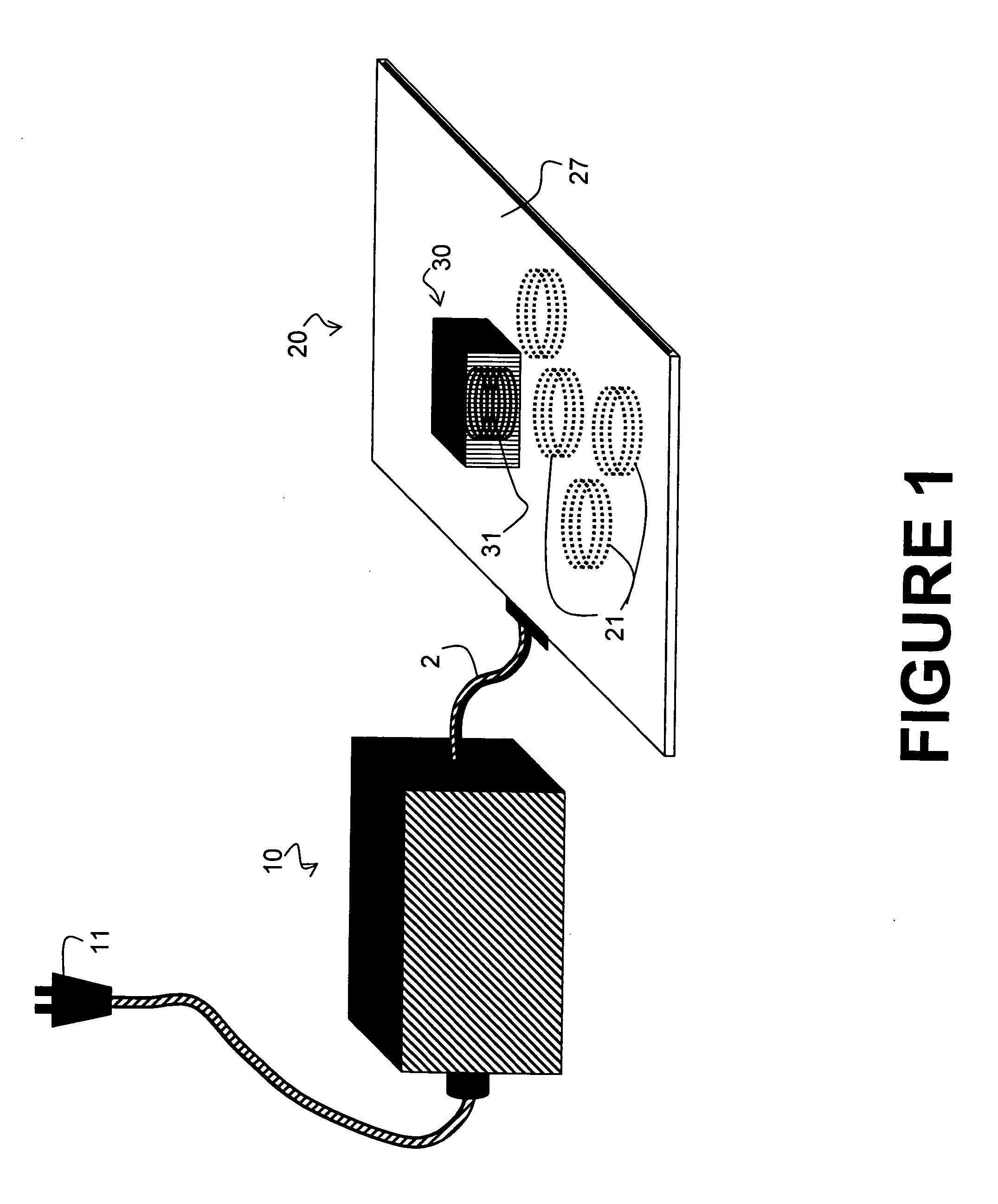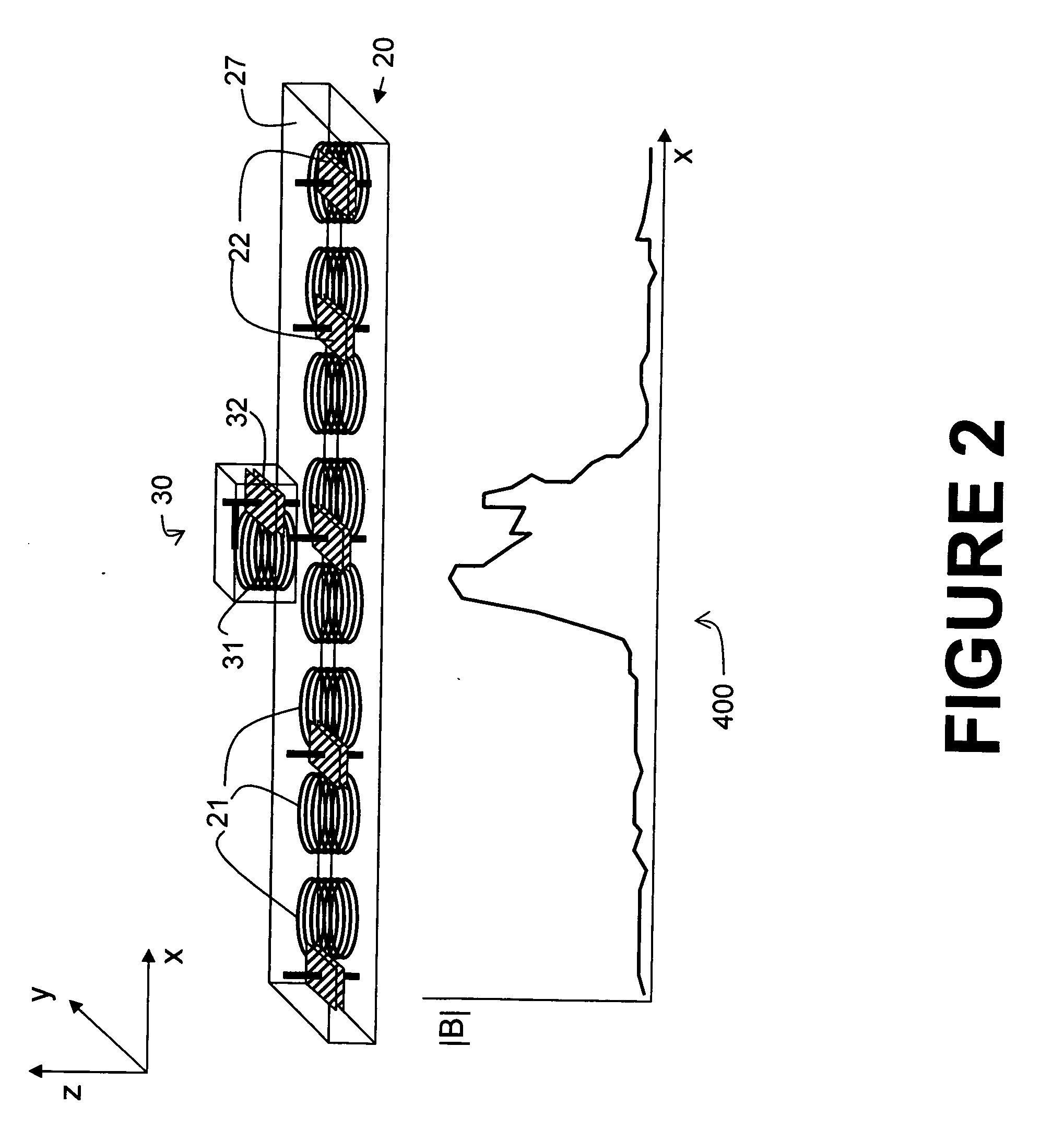Other induction charging device prior arts are similarly restrictive in the way the primary unit mates with the secondary unit.
For those prior art inventions, the secondary device can only be charged by a dedicated primary device designed for it and charging is only possible if the primary unit is aligned accurately to receive the secondary unit it is designed for.
Hence even a 1% flux leakage will result in leakage impedance that is large enough to practically
choke off the primary current.
The requirement for precise alignment presents a major obstacle to the popularity of such devices.
However, the main purpose of RFID technology is not to provide power transfer, but to enable the interrogator to briefly power up the passive tag's
power unit with just enough energy to transmit back the product code information.
Since the intensity of
electromagnetic emission is governed by regulatory limits, any device that is capable of generating a large inductive
magnetic field profile runs the risk of violating such limits.
In addition, numerous objects can be adversely affected by the presence of a large
magnetic field, causing them to either be heated or lose precious stored data.
Despite these advances, this prior art approach suffers from two serious limitations: First, although the magnetic field generated by such approach has a low profile, it does not provide a method to localize the magnetic field around the secondary devices.
Thus, if a
metallic object is placed on or near the active area of the primary device, an
eddy current will be induced, causing the
metal to heat up, with a like effect on the primary unit, which sees the
metallic object as an equivalent short, which may lead to irreparable damage to the primary unit.
Hence the concept can't easily be scaled up to large primary devices without exceeding regulatory limits.
Since each coil requires a dedicated
high frequency switching unit to activate or deactivate, and the central controller unit needs to have an input pin and an output pin for every coil, the complexity increases drastically as the number of primary coils increases.
The drawbacks of the prior art approaches are: First, the power generation devices are typically bulky because of the need to use large inductors and capacitors at such low frequencies as well as the relatively large current requirement.
Second, the high magnetic permeability materials typically have rather large loss tangent, and have nonlinear and hysteretic behaviors at large
magnetic flux intensities.
Further, the strong reliance of the prior art approaches on the use of high permeability materials in order to reduce the bulkiness of both the primary and the secondary device means that the only major high
magnetic reluctance circuit resides within the air gap between the primary and the secondary devices.
The consequence is that the power transfer decreases rapidly as a function of the air gap, rendering the prior art technologies no better than the prior art solution based on direct electrical contact in their ability to tolerate vertical separation.
Since the lower the driving frequency, the larger the magnetic field required for a given power transfer rate, this means that
low frequency inductive power transfer necessarily entails a severe size / power tradeoff, namely, for a given size of the
induction coil, there is a power limit.
For
audio frequency inductive methods, the power limit for an inductive coil that can fit into a typical
cell phone is limited but sufficient to charge a
cell phone.
The situation gets worse for larger devices such as a notebook computer which often requires 20-40 times more power to charge its battery but lacks space for a coil large enough for that purpose.
The inability of the majority of prior arts to localize the inductive field presents thorny interference and safety issues, as well as
energy conversion efficiency issues.
The danger that is inherent in having stray
magnetic flux that can cause metallic objects in its vicinity to heat up, no matter how slowly is a major safety
hazard.
An user wearing a ring on his or her finger, or having a
metallic implant, is liable to have induced
eddy current in and around his / her body.
Lastly, the presence of nonlocalized field which does not couple to
client devices drastically reduce the energy conversion efficiency since the
Q factor of the primary coil is not infinity in practice, hence the portion of the current that is responsible for the generation of such stray flux will always have a resistive component.
The larger the unlinked flux, the higher the dissipation loss.
Even though each of the aforementioned problems can be solved in theory, the solutions invariably increase
system complexity and drive up cost as well as making the system less reliable and less user-friendly.
Although a
metal detector will make the prior art system
safer, it significantly limits how the prior art system can be used.
Even then, any small
metallic object that accidentally falls on the primary surface will have to be removed, which is clearly a big annoyance.
Worst, if an object such as
steel wool whose metallic content is insufficient to trigger the
metal detection happens to be on the primary surface, it may still be able to couple to the inductive magnetic field to generate a small
Eddy current which causes it to slowly get hot enough to create a
fire hazard.
Similarly, if the sensitivity and range of the RFID reader is not properly tuned, it may either be unable to detect an eligible
client device and therefore fails to turn on the primary coils, or there may be a client device that is too far to be charged by the primary device and yet close enough to be identified by the RFID reader to prevent the primary device from going to the standby mode.
 Login to View More
Login to View More  Login to View More
Login to View More 


